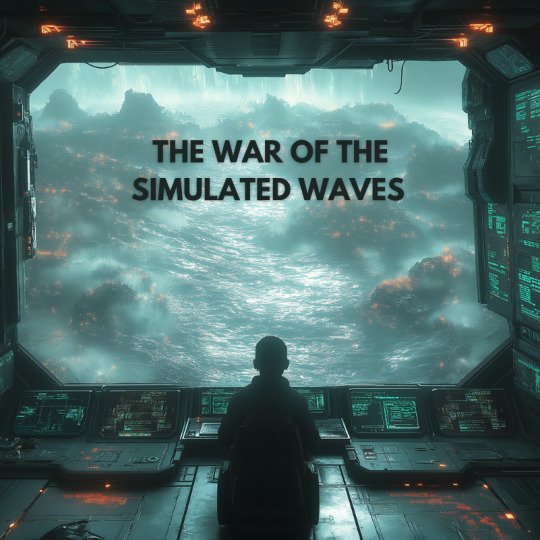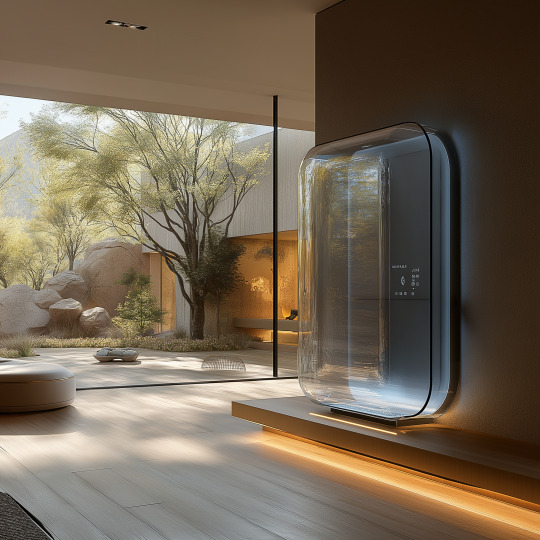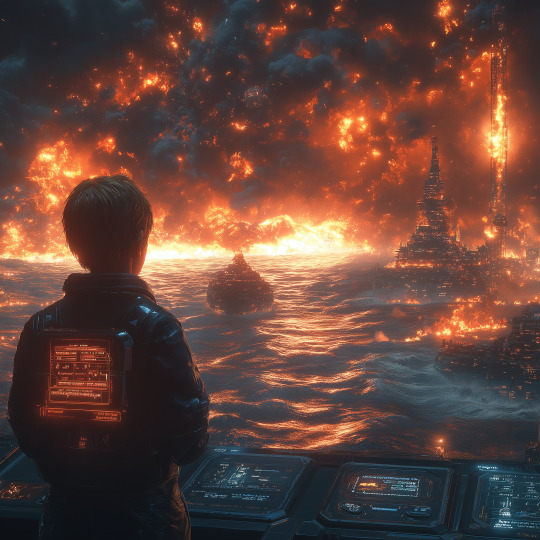Don't wanna be here? Send us removal request.
Text
A Speculative Journey Through 80 Years of Change.....
Food
Impact on Humanity: As food production declines and bioengineered substitutes take over, humans become lean and frail, losing the muscularity of past generations. Taste and texture, once fundamental to the joy of eating, are nearly forgotten. Digestive systems adapt to process nutrient-dense gel packs rather than complex foods, but many experience deficiencies, their bodies lacking the diversity of nutrients that come from real food. Social gatherings around meals fade, and eating is seen as a chore more than a pleasure, creating a colder, more isolated society.
Water
Impact on Humanity: Clean water becomes so scarce that many are forced to drink chemically purified or recycled water, which takes a toll on their health over time. Kidneys and other filtration organs face heightened strain, leading to a rise in renal issues. Skin becomes dry and cracked as hydration suffers, and people learn to live with minimal bathing routines, changing cultural perceptions of cleanliness and personal space. Access to pure water becomes a sign of privilege, with the wealthy physically appearing more robust and healthy.
Housing
Impact on Humanity: Urban density and space constraints force most people into micro-apartments, making personal space a luxury. Cramped living quarters affect posture, and people become used to low ceilings and confined areas, leading to shorter, more compact physical builds over generations. Lack of exposure to natural light makes skin pale and weakens bones, while mental health deteriorates as privacy is nearly nonexistent, straining relationships and causing social anxiety to skyrocket.
Education
Impact on Humanity: Education is delivered through immersive, augmented reality modules that train specific skills, but without the depth of traditional learning. People develop rapid problem-solving skills and data-processing abilities, but their creativity and critical thinking suffer. Attention spans shorten, and with learning focused only on productivity, the sense of wonder that once fueled discovery fades. Over time, curiosity becomes a rarity, and humans become efficient, almost robotic, task-completers.
Healthcare
Impact on Humanity: Advanced AI diagnoses become the norm, with physical check-ups rare. Bodies adapt to routine, algorithm-prescribed regimens, and people develop a detached view of health. Chronic conditions and physical weaknesses go unchecked without real human intervention, leading to frail, tech-dependent bodies. Genetic engineering heightens physical disparities, with the wealthy growing healthier and stronger, while the lower classes visibly age faster and become more prone to sickness.
Social Equity
Impact on Humanity: Social divides deepen, manifesting in physical and cultural differences that make the rich almost a separate class of human. Healthier, taller, and visibly more robust, the elite live in exclusive zones, with poorer communities visibly marked by health issues and stunted growth. Discrimination becomes more palpable as people are visibly “ranked” by status, and society is increasingly segregated, with empathy and shared identity fading across classes.
Gender Equality
Impact on Humanity: Economic divides affect gender equality; where advancements are made, individuals become more androgynous in dress and behavior. In less privileged areas, traditional gender roles persist, limiting people’s opportunities and appearances to stereotypes. Those in the elite class who experience equality express a fluidity and freedom in gender expression, while others conform to strict norms for survival. This duality creates a fractured sense of identity and belonging.
Work & Income
Impact on Humanity: With gig work dominating, people lose physical strength from sedentary, tech-based jobs. Their bodies adapt to prolonged periods of sitting, leading to widespread muscle weakness and posture problems. The lack of stable income and constant stress harden facial features, creating a look of weariness. People’s hands and eyes become strained from screen exposure, and reliance on digital interfaces dulls sensory engagement with the physical world.
Energy / Electricity
Impact on Humanity: Energy rationing reshapes lives, with people clustering in small, low-energy spaces. With limited access to heat and air conditioning, bodies adapt to fluctuating temperatures, becoming more resilient to discomfort. Skin becomes rougher, and people develop stronger immune systems to cope with unstable living conditions, but mental health declines as consistent comfort is a rarity, leaving people emotionally raw and easily agitated.
Peace & Justice
Impact on Humanity: High surveillance leads to heightened stress and self-censorship, making people more reserved and cautious. Constant monitoring alters human interactions, as people avoid eye contact and limit expressions of emotion to avoid scrutiny. Bodies exhibit signs of tension, with frequent headaches, digestive issues, and rigid postures. People feel disconnected, less trusting, and more isolated, as privacy is almost nonexistent.
Transportation
Impact on Humanity: Access to fast, reliable transportation is limited to the wealthy, with others relying on crowded public systems. Bodies become resilient to jostling and long commutes, but exposure to pollution and poor conditions affects respiratory health. Socially, people distance themselves from one another, forming protective zones around their bodies, leading to a culture that avoids physical closeness and intimacy.
Political Voice
Impact on Humanity: Digital voting is widespread, but meaningful influence is skewed toward elites with higher social credits. This inequality breeds apathy among the lower classes, with people displaying disinterest or even disdain for collective decision-making. Physically, they become more slumped and expressionless, reflecting the loss of empowerment, while those with more political sway stand with visibly more confidence.
0 notes
Text
"THE WAR OF SIMULATED WAVES"

It was the year 2104, and the world had changed in ways no one could have predicted. The ocean stretched endlessly before Rina, a twelve-year-old girl born into a reality she had never truly known. The sky above her was a mix of angry storm clouds, crackling with lightning, while below, the once-blue sea swirled in unnatural patterns. Giant waves crashed against metal hulls, sending shudders through the few remaining ships.
Rina wasn’t on a real ship, though. At least, not in the sense her ancestors had sailed. This was a war at sea, but it was fought in the mind. A simulation of survival, created to test children like her. The borders of countries had vanished, replaced by factions who believed the future could only be secured through the best-trained minds. And in this future, children were chosen to become tactical leaders, starting in simulations like these—where reality and programming blended into one.
Rina tightened her grip on the control panel as her ship, an angular, sleek vessel designed for speed, lurched through the stormy seas. The water splashed against her face, but in truth, she knew the water wasn’t real. Her mind told her it was cold, but her body sat in the safety of a command pod, far away from the war she fought. Yet everything felt real—the salt on her lips, the wind howling in her ears, the deep rumble of thunder overhead.
She glanced at the horizon, where several other warships emerged, flickering in and out of sight, masked by the digital storm. These warships weren't real either; they were part of the simulation—a test of her ability to lead, fight, and survive. The goal? Make it possible to outwit the enemy, a task that was becoming increasingly difficult as the simulation grew more complex.
Suddenly, a blip on the radar appeared—a child's voice crackled through her headset, “Rina, they’re on our tail. What’s the strategy?”
Her hands moved quickly across the panel. “Maintain formation. We’ll flank from the left, steer toward that wreckage.”
Ahead of them, a destroyed ship from a previous battle drifted aimlessly, its metal shell twisted and burned. It provided the perfect cover. Rina's ship sped toward it, its engines humming beneath her feet. The AI-generated waves lashed against its hull, but Rina stayed focused, calculating every possible move.
But war was never easy. The simulation's AI was smart, programmed to evolve. Enemy ships adjusted to her strategy. The sound of cannon fire rang out, and Rina's ship took a hit. The vessel rocked violently. Sirens blared around her. A reminder of what could happen if she failed this mission.
Her heart raced, but Rina's face remained calm. "We won’t lose," she whispered to herself. Another maneuver, another dodge. Her fingers danced across the screen as the ship twisted in a wild loop, narrowly avoiding the next blast.
With a final command, the enemy ship was outsmarted. A burst of light on the horizon signaled the end of the battle. The ocean calmed.
The simulation faded, and Rina found herself back in the real world, the cold metallic pod hissing open. She stepped out, breathless, her body drenched in sweat. Around her, other children also emerged, their eyes wide with exhaustion, yet determination.
Rina looked out of the simulation lab’s window. Outside, the sky was peaceful, but the tension in the air inside the facility remained. In a world where war was no longer fought with physical weapons but with minds, Rina knew her training was far from over. She had won this battle, but there were more to come.

1 note
·
View note
Text
Breeze of Tomorrow: The Evolution of the Desert Cooler
In 50 years, the desert cooler had evolved into a sleek, AI-driven climate control system. Its exterior, once a bulky box, was now a translucent, self-healing surface that blended seamlessly with the walls. It was no longer just a simple cooler but a smart ecosystem that anticipated weather patterns and adjusted the home’s climate accordingly.
Embedded with nano-technology, it could transform any room into a refreshing oasis, pulling moisture from the air and generating clean, breathable coolness. The cooler was powered by solar energy and harnessed the power of local water sources, making it not only eco-friendly but self-sustaining. It could even create a micro-climate inside the house, adjusting humidity levels to keep the air crisp and comfortable all year round.
The coolest feature? It communicated with other smart devices in the home, analyzing individual needs. A family member with asthma could receive purer, cleaner air in their room, while another could enjoy a light, cooling breeze in theirs. The desert cooler was no longer a simple appliance but a crucial part of life in the future, creating a healthier, smarter, and more sustainable home environment.

2 notes
·
View notes
Text
The last simulation
The Last Simulation
The year was 2104, and the world had not known peace for decades. Nations fought over dwindling resources, and the seas—once a haven for explorers—had become battlegrounds where the remnants of the world's navies waged a never-ending war. But for Aryan, a twelve-year-old boy, the war was not just history. It was a simulation that had become all too real.
Aryan lived in the floating city of New Horizon, one of the few safe zones left at sea. His father, a war hero, had died years ago defending the city’s waters. Since then, Aryan had been raised by his grandfather, a retired naval officer who spent his days training Aryan in the ancient art of warfare, but not on battlefields—inside a simulation. This was how most children learned in the future. War, survival, and history were taught through simulations that could make the impossible possible.
The simulation was unlike any game. It connected seamlessly to the child’s mind, immersing them into the past, recreating the great wars fought across the oceans, the destruction that had consumed the world. Inside the virtual space, Aryan could command fleets, outsmart enemies, and understand the tactics that had led to the downfall of civilizations.
But for Aryan, it wasn’t just a game. There was something broken in the system, something wrong. The lines between simulation and reality began to blur. Every time Aryan entered, the warships seemed more real, the explosions louder. He felt the ocean spray against his face, the tremor of cannon fire shaking his bones.
One evening, while deep inside the simulation, Aryan was navigating through a fierce naval battle when he spotted something odd: a young girl about his age, standing alone on the deck of a burning ship. She wasn’t part of the simulation. Aryan tried to end the session, but he couldn’t log out. Panic set in.
The girl called out, her voice cutting through the noise, "This isn’t a simulation anymore. They made it possible."
Suddenly, Aryan’s grandfather pulled him out of the system, alarmed. "They’ve connected it to the real world, Aryan. The War at Sea isn’t just a lesson now. It’s happening again."
The simulations, once thought to be harmless tools for learning, had become something else—an echo of the wars long gone, brought to life by those in power, with children like Aryan caught in the middle. But now, they would have to do more than survive in the simulated world. They would have to find a way to stop the war from bleeding into their reality and make peace truly possible.

2 notes
·
View notes